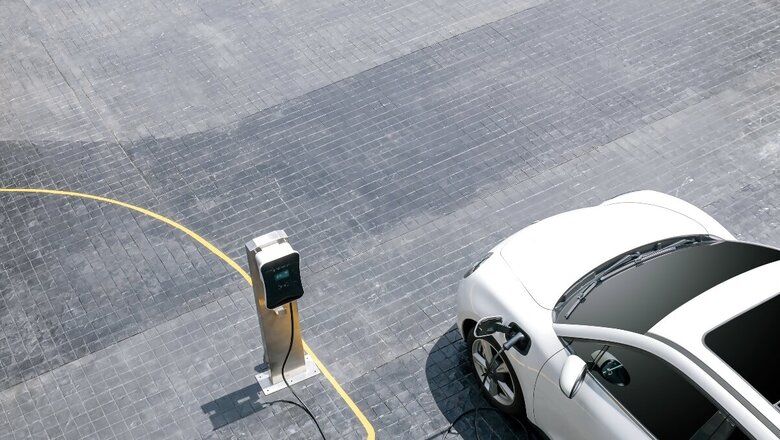
views
Data from JMK Research has highlighted that in terms of registered electric vehicle (EV) cumulative sales, till FY2024, Uttar Pradesh has been at the top spot, but it is Karnataka which has the highest number of public charging stations. However, that is not the case in Maharashtra, as this western state ranks second in both EV sales and charging stations.
It’s reasonable to question why one state has the most EV sales while another has the most charging stations. Logically, the state with the highest EV sales should have the most charging infrastructure. The explanation for this discrepancy lies in the data.
Karnataka Leads the Way
As of May 2024, Karnataka has emerged as the leader in public EV charging infrastructure with 5,130 stations, accounting for 31 per cent of the total in India. Maharashtra followed with 3,083 stations (19 per cent), then Delhi with 1,886 (12 per cent), Kerala with 958 (6 per cent), and Tamil Nadu with 643 (4 per cent). Collectively, these five states contribute to 72 per cent of India’s public charging stations, underscoring their pivotal role in supporting EV adoption.
However, UP acquired the sixth position with 583 changing stations, followed by other states like Rajasthan (500), Gujarat (476), Haryana (377) and Madhya Pradesh (341).
Uttar Pradesh Dominance
Contrasting sharply with the distribution of charging stations, the sales data for EVs till FY2024 has placed UP at the forefront, with 19.05 per cent of the cumulative sales. Maharashtra (10.87 per cent), Karnataka (8.62 per cent), Delhi (6.89 per cent), Rajasthan (5.99 per cent) and Tamil Nadu (5.60 per cent) follow.
Other states like Bihar (5.58 per cent), Gujarat (4.65 per cent), Telangana (4.50 per cent), Assam (3.94 per cent), Kerala (3.65 per cent) and Madhya Pradesh (3.62 per cent) also featured prominently in the JMK’s state-wise EV sales list.
A deeper look into the types of EVs sold revealed significant insights. In UP, a staggering 82.45 per cent of EV sales were electric three-wheelers (passenger), with electric two-wheelers and cargo three-wheelers making up 12.50 per cent and 4.03 per cent respectively. But electric cars and buses constituted a minuscule portion (0.83 per cent and 0.09 per cent).
The Contrast
The disparity between where charging stations are booming and where EVs are predominantly sold stems from the types of vehicles in demand. Karnataka’s dominance in charging infrastructure aligns with its high sales of electric two-wheelers (85.53 per cent) and cars (6.94 per cent). Similarly, Maharashtra’s infrastructure supports its EV sales composition, predominantly two-wheelers (85.53 per cent) and cars (7.72 per cent).
In Delhi, three-wheelers (passenger) dominate the market with 48.92 per cent, but there is also significant demand for two-wheelers (32.54 per cent) and electric cars (7.28 per cent). Similarly in Kerala, sales of electric two-wheelers and cars show the prominent majority, while in Tamil Nadu, electric two-wheelers account for 88.01 per cent of sales.
In contrast, UP’s high EV sales are driven by electric three-wheelers, which do not rely heavily on public charging stations. These vehicles often utilise simple three-pin or 16-ampere plugs to charge the vehicle. This pattern is echoed in Bihar and other states where three-wheelers dominate the EV market or cars and two-wheelers sales are less.
Deepak Paliwal from Fortum, an industry insider, has also offered crucial insights into this phenomenon. He explained that the high number of electric three-wheelers in UP reduces the need for public charging stations, as these vehicles can be easily charged using basic electrical setups.
Separately, as per the data in both Rajasthan and Gujarat, EV sales are dominated by electric two-wheelers, but with significantly low car sales. However, in Rajasthan, the second most sold vehicle is the electric three-wheeler (passenger) at 29.35 per cent.
However, it needs to be understood that even though there are companies who have been setting up charging stations around the country for both cars and two-wheelers, the latter is designed to be conveniently charged at home. Their inclusion of home-compatible chargers makes them convenient for urban dwellers and short-distance commuters. However, in terms of electric cars, public charging stations play a vital role because of certain factors like long trips, limited home charging options, faster charging or quick top-up during travel and situations where home charging isn’t possible.
The current landscape of EV charging infrastructure and sales in India highlights the necessity of aligning infrastructure development with the types of vehicles in demand. States leading in electric car and two-wheeler sales, such as Karnataka and Maharashtra, naturally require more robust public charging networks. Conversely, states like UP, with a predominance of electric three-wheelers or less market for cars and two-wheelers, show less dependency on such infrastructure.
As India continues its transition to electric mobility, by acknowledging these nuances, policymakers and investors can ensure that infrastructure development aligns with actual demand, leading to a more efficient and user-friendly EV ecosystem
Explore in-depth coverage of Lok Sabha Election 2024 Voter Turnout, Upcoming Phase, Results Date, Exit Poll And Much More At News18 Website




















Comments
0 comment